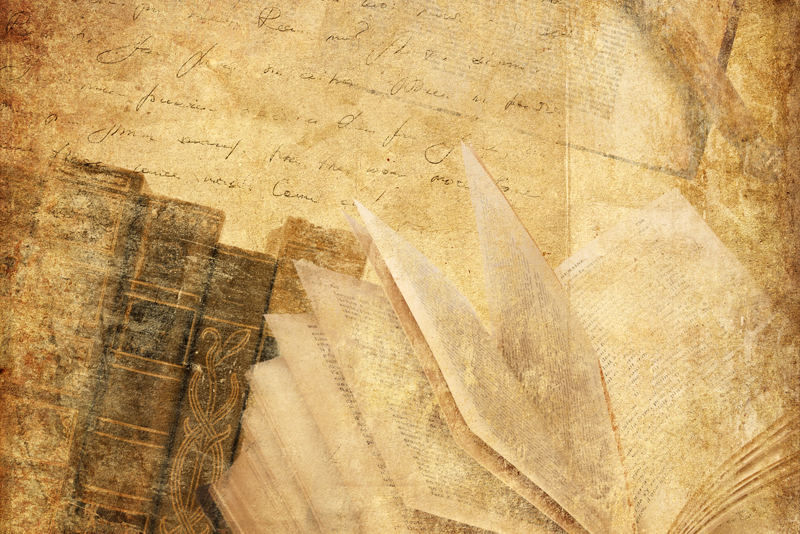Drama as a Form of Literary Fiction

It all started with Dionysus, the classical Greek god of fertility and creativity. To honor him, worshippers chanted hymns in a chorus, moving rhythmically around the altar. Choruses from different regions might compete with one another in performing their odes. The chorus members were all men, as public performance was considered indecent for women. In the 5th century BC, the poet Thespis modified these rites: one performer was singled out from the chorus, and he spoke the lines of the odes as a persona, not as himself. The dramatist Aeschylus invented a second character who provided conflict. This is the origin of drama.
Playwrights such as Aeschylus and Sophocles, who wrote the Oedipus Rex trilogy, competed at the City of Dionysia festival. The winner is believed to have been awarded a goat – tragos in ancient Greek; hence the term for the most respected form of drama. Tragedies and comedies, as well as satyr plays that portrayed lewdness and drunkenness, were presented in open-air amphitheaters. Stories were dramatized from myth and legend, history and epic poetry: Odysseus, Antigone, the Peloponnesian War. The conflict and resolution of tragedy in particular taught the audience moral lessons. In the 4th century BC, Aristophanes wrote Lysistrata, a comedy in which the women of Athens withheld sex from their husbands until the men agreed to end the war with Sparta.
By the time the English adopted drama in medieval times, Roman playwrights such as Seneca had made further modifications: they eliminated the chorus, divided the action of the play into scenes, and portrayed enduring themes such as revenge and mistaken identities. Scholars studied classical drama as an art form while the public enjoyed mystery plays and farces alike, which were presented in everyday language. During the Renaissance, as all forms of Italian art influenced the English, popular drama was increasingly written by educated writers such as Thomas Kyd, who established the use of blank verse in The Spanish Tragedy. Kyd’s revenge tragedy was the most popular play of the 16th century.
The most influential dramatist from the 16th century onwards is Shakespeare. In aspiring to be a respectable poet, Shakespeare elevated storytelling to a literary art. He, too, adapted legends and histories, but the characters he gave voice to – among them Hamlet, King Lear, and Lady Macbeth – were truer to life than any other. His poetic prowess was unparalleled, although this was not recognized until the Romantic period, when writers studied his works in addition to the classics. The plots of Shakespeare’s plays were full of action, to the point that an onstage cannon set fire to the Globe Theatre in 1613 during a performance of Henry VIII. In 1623, six years after Shakespeare’s death, the polished text of all his plays was published in the First Folio. He had been just another writer of stage plays in his lifetime, but following the publication of his sonnets and poems as well as plays, Shakespeare became a widely read author. The new technology of printing immortalized him.
As European societies flourished in the early modern era, drama took on the role of holding, in Hamlet’s words, “the mirror up to nature,” portraying real-world situations and more authentic dialogue. Realism was a style that permeated all the arts, as artists pondered the ways in which social progress affected humanity. Henrik Ibsen, the Norwegian playwright often credited as the founder of modern drama, explored social concerns such as the economic role of married women in A Doll’s House (1879). The play’s ending scandalized the audience, as Nora leaves her repressive husband as well as their children. It is realistic drama that interested American writers throughout the 20th century, such as Eugene O’Neill, Lillian Hellman, Tennessee Williams, and Arthur Miller. However, with the advent of motion pictures in the early 1900s, drama found a formidable rival for audiences’ attentions.
Today most of us read drama texts only in English and theater classes. As was the case in most of its history, drama is written for only a subset of the reading public: actors, directors, producers, scholars. A drama group equivalent to a book club is one that performs readers’ theater, in which each person plays a role by reading the lines aloud instead of acting. Unlike other forms of literary fiction, drama is best read in collaboration, allowing the author’s words to come alive, touch the heart, and provoke thought.
Playwrights such as Aeschylus and Sophocles, who wrote the Oedipus Rex trilogy, competed at the City of Dionysia festival. The winner is believed to have been awarded a goat – tragos in ancient Greek; hence the term for the most respected form of drama. Tragedies and comedies, as well as satyr plays that portrayed lewdness and drunkenness, were presented in open-air amphitheaters. Stories were dramatized from myth and legend, history and epic poetry: Odysseus, Antigone, the Peloponnesian War. The conflict and resolution of tragedy in particular taught the audience moral lessons. In the 4th century BC, Aristophanes wrote Lysistrata, a comedy in which the women of Athens withheld sex from their husbands until the men agreed to end the war with Sparta.
By the time the English adopted drama in medieval times, Roman playwrights such as Seneca had made further modifications: they eliminated the chorus, divided the action of the play into scenes, and portrayed enduring themes such as revenge and mistaken identities. Scholars studied classical drama as an art form while the public enjoyed mystery plays and farces alike, which were presented in everyday language. During the Renaissance, as all forms of Italian art influenced the English, popular drama was increasingly written by educated writers such as Thomas Kyd, who established the use of blank verse in The Spanish Tragedy. Kyd’s revenge tragedy was the most popular play of the 16th century.
The most influential dramatist from the 16th century onwards is Shakespeare. In aspiring to be a respectable poet, Shakespeare elevated storytelling to a literary art. He, too, adapted legends and histories, but the characters he gave voice to – among them Hamlet, King Lear, and Lady Macbeth – were truer to life than any other. His poetic prowess was unparalleled, although this was not recognized until the Romantic period, when writers studied his works in addition to the classics. The plots of Shakespeare’s plays were full of action, to the point that an onstage cannon set fire to the Globe Theatre in 1613 during a performance of Henry VIII. In 1623, six years after Shakespeare’s death, the polished text of all his plays was published in the First Folio. He had been just another writer of stage plays in his lifetime, but following the publication of his sonnets and poems as well as plays, Shakespeare became a widely read author. The new technology of printing immortalized him.
As European societies flourished in the early modern era, drama took on the role of holding, in Hamlet’s words, “the mirror up to nature,” portraying real-world situations and more authentic dialogue. Realism was a style that permeated all the arts, as artists pondered the ways in which social progress affected humanity. Henrik Ibsen, the Norwegian playwright often credited as the founder of modern drama, explored social concerns such as the economic role of married women in A Doll’s House (1879). The play’s ending scandalized the audience, as Nora leaves her repressive husband as well as their children. It is realistic drama that interested American writers throughout the 20th century, such as Eugene O’Neill, Lillian Hellman, Tennessee Williams, and Arthur Miller. However, with the advent of motion pictures in the early 1900s, drama found a formidable rival for audiences’ attentions.
Today most of us read drama texts only in English and theater classes. As was the case in most of its history, drama is written for only a subset of the reading public: actors, directors, producers, scholars. A drama group equivalent to a book club is one that performs readers’ theater, in which each person plays a role by reading the lines aloud instead of acting. Unlike other forms of literary fiction, drama is best read in collaboration, allowing the author’s words to come alive, touch the heart, and provoke thought.

Related Articles
Editor's Picks Articles
Top Ten Articles
Previous Features
Site Map
Content copyright © 2023 by Lane Graciano. All rights reserved.
This content was written by Lane Graciano. If you wish to use this content in any manner, you need written permission. Contact Yvonne Ije for details.







